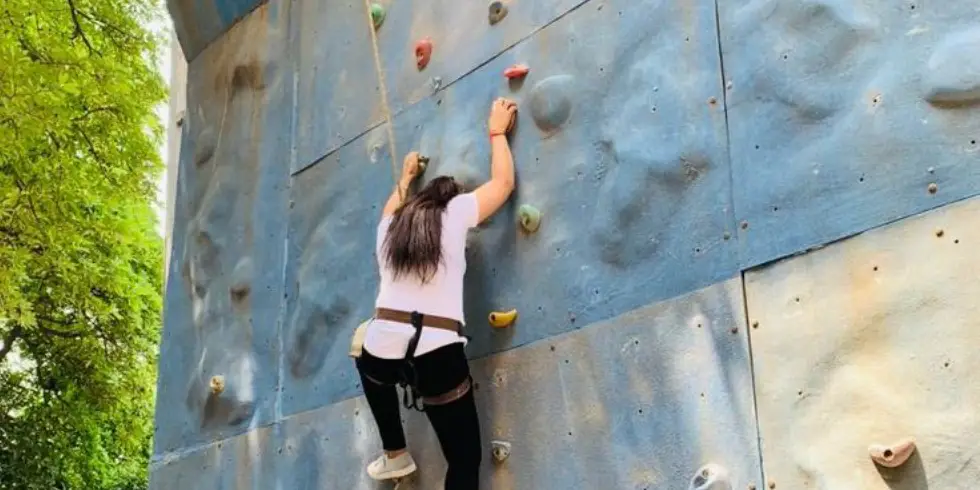Climbing mountains is a thrilling and demanding sport that has grown in popularity over the years. Climbing is a dangerous sport that tests your physical and mental strength to the limit. Despite the hazards and challenges, there are many positive aspects to outdoor adventure that make it worthwhile.
Types of mountain climbing, potential dangers, rewards, and survival advice are all topics we’ll cover here.
The Various Mountain Climbing Styles
Different mountain climbing techniques have different challenges and tactics. Let’s look at three prevalent mountain climbing techniques:
- Mountain climbing: High-altitude climbing is challenging due to unpredictable weather, thin air, and icy terrain. A mountain climb is Mount Everest. Technical expertise, physical endurance, and readiness for high altitude and harsh weather are required to climb Mount Everest.
- Rock Climbing: Another well-liked mountain climbing activity is scaling cliffs and rocks. Rocks are climbed by climbers using their hands, and festivity is scaling cliffs and rocks. Rocks are climbed by climbers using their hands and feet. Famous for its granite cliffs and challenging climbs, Yosemite National Park is located in California.
Climbing 1000-foot rock faces is known as “big wall climbing.” Technical skill and endurance are required because climbers spend days on the wall. A renowned huge wall climb is the over 3,00-foot El Capitan in Yosemite National Park
The Benefits of Mountain Climbing
Mountain climbing has several rewards beyond the physical risks. Mountain climbing’s advantages:
- Mountain climbing takes strength, endurance, and mental toughness. High altitude climbing requires physical and mental fitness. Pushing climbers to their limits and overcoming concerns and doubts can also promote mental resilience.
- Mountain climbing is a unique way to connect with nature and appreciate its beauty. Climbers encounter beautiful views, landscapes, and mountain tranquillity. Nature may relieve tension and anxiety.
- Exploration & Adventure: Mountain climbers explore new places and face new challenges. Climbing helps people try new things and gain confidence.
- Mountain climbers need each other for support and safety, which requires cooperation and friendship. Collaboration and fellowship can be fostered when climbers work together to accomplish a goal. Both personal and professional bonds can benefit from teamwork.
Mountain climbing has several rewards beyond the physical demands and risks. It’s a great way to improve strength, connect with nature, explore new places, and work together.
Planning is necessary for mountaineering.
Consider that you are ascending Africa’s tallest peak, Mount Kilimanjaro. Learn about the elevation, climatic conditions, and terrain of the mountain before ascending. Climb Mount Kilimanjaro in the dry season to avoid rain and snow.
To climb safely, you need high-quality gear. For instance, durable boots with good traction will save you from slipping on rocky terrain. Using a harness, climbing ropes, and a helmet will help you protect yourself from flying rocks and other debris.
For the ascent, the proper conditioning and training are required. Because of its difficulty, Mount Kilimanjaro is a challenging mountain to climb. Try training for weightlifting, trekking, and aerobics before climbing to build up your muscle strength and endurance will be a smart move.
Mountain climbing generally requires substantial planning. If you do your homework, invest in high-quality gear, and train, your odds of climbing the mountain will rise while hazards and challenges will diminish.
Tips and Tricks for a Successful Climb
Here are some tips and tricks to help you have a successful climb:
- Train your body: Mountain climbing demands strength and endurance. Exercises including cycling, hiking, and jogging are featured as well as cardio, strength, and endurance activities.
- Stay Hydrated and Nourished: Maintaining energy and preventing dehydration when climbing requires staying hydrated and nourished. Bring enough water, electrolyte-rich sports drinks, and nutrient-dense snacks to power the ascent.
- Mountain climbing needs concentration and caution. Be cautious and focused when travelling through challenging terrain or weather.
- Before ascending a mountain, research its topography, weather, and potential threats. This will help you plan your path and prepare for obstacles.
- Success in climbing requires high-quality equipment. This comprises climbing ropes, harnesses, helmets, and strong footwear. Before climbing, inspect and fit your gear.
- Mountain climbing requires listening to and understanding your body. Rest if you feel tired, dehydrated, or have any other symptoms. Avoid overexertion.
- Start Small and Work Up: Even experienced climbers find mountain climbing difficult. Start modestly and move up to harder climbs. This will improve your abilities, confidence, and endurance.
These ideas will help you climb safely and enjoy mountaineering.
The Risks and Challenges of Mountain Climbing
Mountain climbing is a fun and rewarding activity, but it comes with its own risks. Let’s examine mountain climbing’s risks and challenges:
- Mountain weather can change quickly. Storms, lightning, heavy winds, and snow can surprise climbers, causing hypothermia, frostbite, or death. A 1996 Mount Everest storm killed eight climbers.
- Mountaineers must cross steep slopes, snowy ridges, and loose rocks. Climbers can slip and die. An Oregon climber died on Mount Hood in 2018.
- Altitude sickness is caused by thin, oxygen-deficient air at high altitudes. Altitude sickness can lead to life-threatening headaches, dizziness, and shortness of breath. Altitude sickness killed a Mount Everest climber in 2019.
- Equipment failure falls, and rockfalls can cause climbing accidents. In 2017, two Mount Everest climbers died through falls and rock falls.
In conclusion, mountain climbers should know the hazards and challenges before starting. Preparation, training, and caution can reduce many of these dangers. Climbers should research the mountain, get good gear, and train.
Conclusion
Mountain climbing may be fun and rewarding with proper planning, training, and caution. Mountain climbing benefits include visiting new locations, interacting with nature, and team building. However, knowing the hazards and taking steps to mitigate them, such as researching the mountain, and having adequate gear and training, is crucial. Mountain climbing is a great way to challenge oneself and enjoy nature.
However, it requires many days of leave from work and expensive equipment, and the probability of something bad happening is always there. That is why Jurasik Park Inn offers visitors an artificial mountain climbing experience; it comes with the highest quality safety equipment and trained experts to save you at any time.




